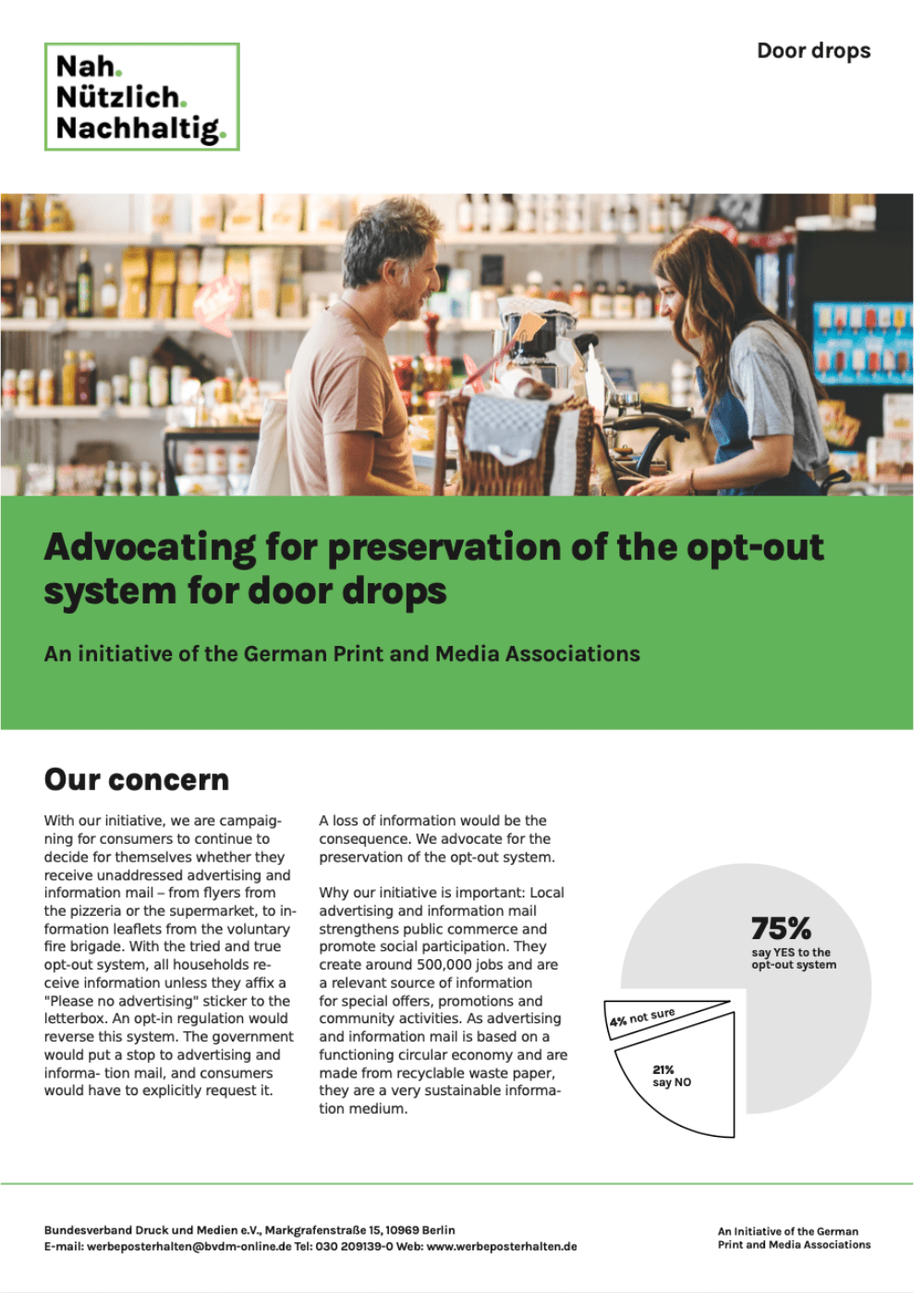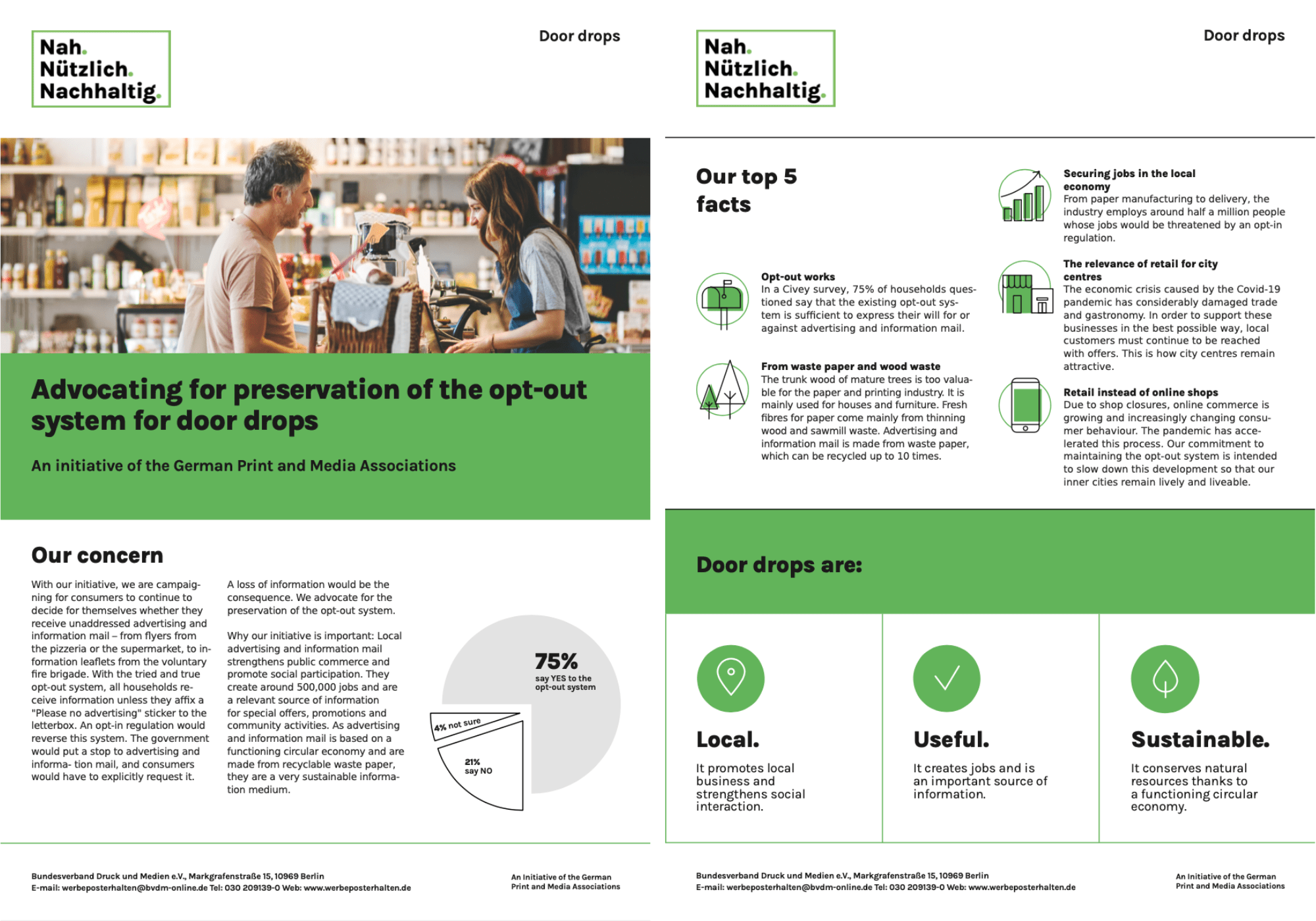Sustainable
Door drops conserve natural resources due to a well-functioning circular economy.

Why sustainable
They consist of waste paper and wood waste.
Materials used for door drops are recycled paper and scrap wood. Hence, do not contribute to deforestation. In Germany, most of the paper fibres come from debarked trees and sawmill production waste. Also, since we are constantly reforesting, the woodland areas in Europe are growing by over 1,500 football pitches every day!
79% That's how high the recycling rate for printer paper is in Germany.
Door drops have a low carbon footprint.
The German paper industry’s effective circular economy currently results in a recycling rate of 79%. The CO2 emissions of the advertising mail production amount to 0.05% of a German citizen’s total annual CO2 footprint, which according to the Federal Environment Agency is currently 11.6 tons of CO2 per year.
Door drops don’t generate huge amounts of waste
Advertising and information mail is largely made from recycled paper. Since waste paper can be recycled up to 10 times, it is not rubbish but rather a sought-after resource. Producers of newspapers, books, household and sanitary paper as well as packaging rely on waste paper.
Door drops are a result of eco-friendly manufacturing.
The German printing and paper industry is more sustainable than almost any other industry branch. Paper production uses up to 80 % of wastewater. The annual average energy
consumption per household attributed to door drops is 44 kWh. This is equivalent to the energy value of about 4 litres of heating oil.
Almost all the advertising and information mail that is dropped into our letterboxes is made from recycled paper.
In 2020, the German Federal Environment Agency (UBA) conducted a sustainability assessment of recycled paper.
- According to the study, recycled paper has clear ecological benefits compared to virgin fibre papers:*
- Fresh wood demand is reduced and is available for longer-lasting usage.
- Recycled paper does not need to be bleached as intensively as virgin fibre paper.
- The production of recycled paper requires only half the amount of energy, and between one-seventh to one-third of the amount of water used in the manufacturing of virgin fibre paper.
- Recycled paper manufacturing in Germany emits an average of 15 % less carbon dioxide than virgin fibre paper.
- The use of recycled paper protects forests and consequently reduces the loss of biodiversity, which is a result of intensive forestry and plantation management with social and ecological consequences around the globe.
Our factsheet
Here you can read the most important facts about our initiative at a glance.



